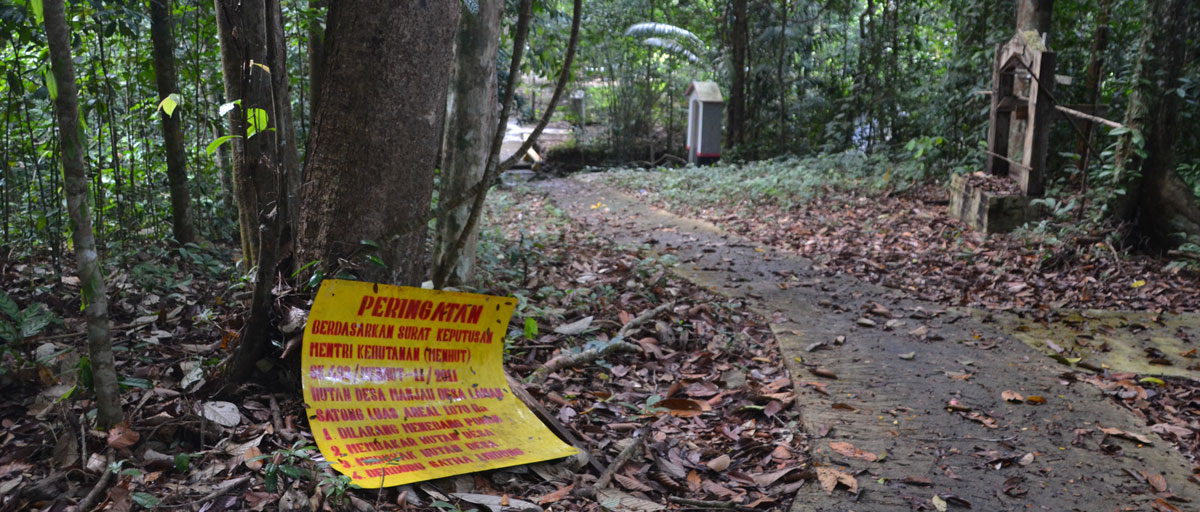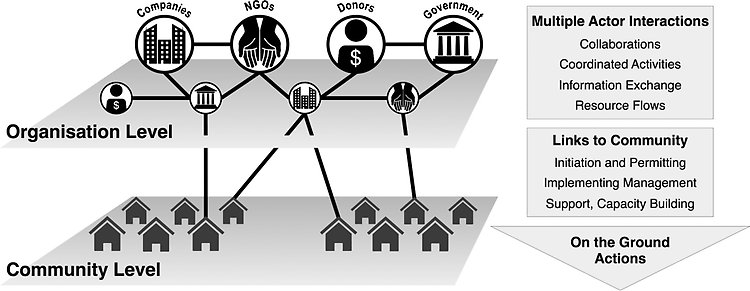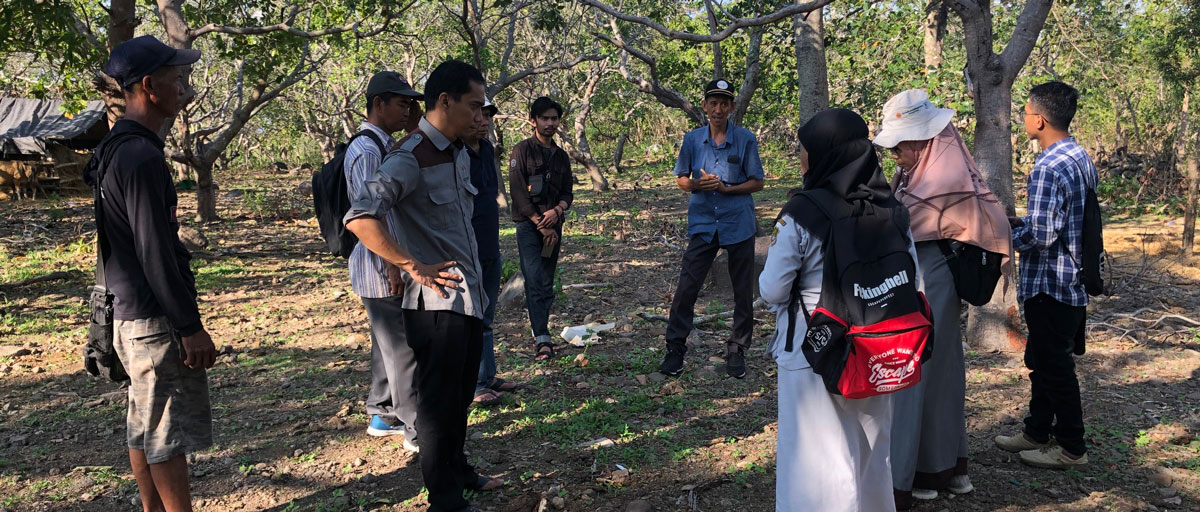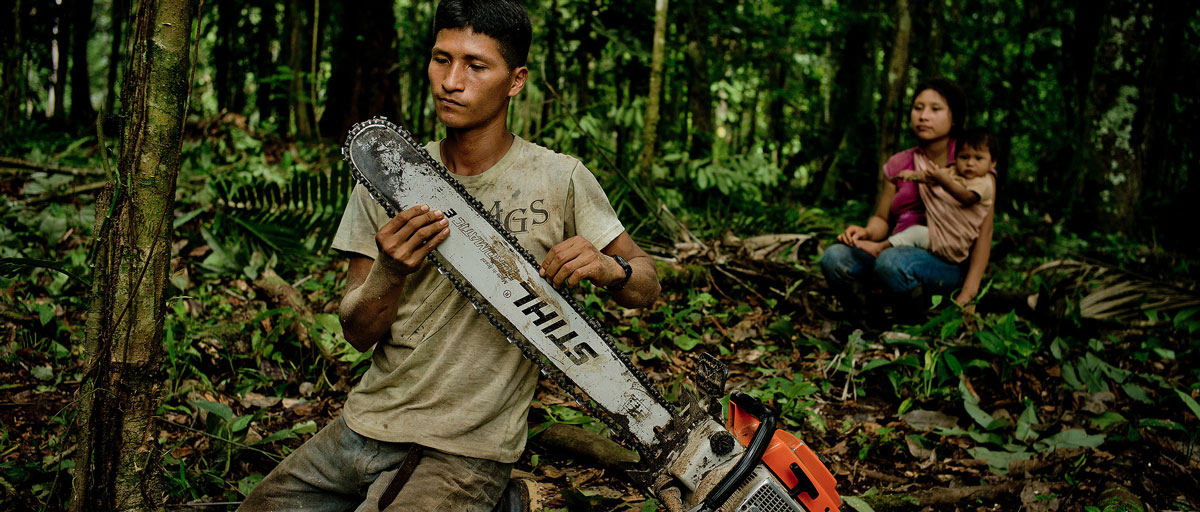Bildtext får vara max två rader text. Hela texten ska högerjusteras om den bara ska innehålla fotobyline! Photo: B. Christensen/Azote
FOREST MANAGEMENT
In Indonesia, forest management collaboration remains frustratingly unbalanced

A study in Land Use Policy shows how the prominence of conservation NGOs could reduce the chance of reaching both social and environmental objectives in community-based forest management in Borneo, Indonesia. Photo: R. Friedman
- Collaboration between a variety of actors is most prominent in the early stages of a new project
- NGOS featured prominently in initiating the permit process, implementing management and providing support activities
- However, conservation rather than social motives characterised several of the NGOs active in villages
Community-based forest management has expanded rapidly, but attention to long-term sustainability is still elusive
BONDING VS. BRIDGING: The term community-based forest management (CFM) might evoke images of dedicated individuals and grassroots efforts, but the reality reveals a more complex picture.
A study published in Land Use Policy, written by centre researcher Angela Guerrero together with lead author Rachel Friedman from the Centre for Biodiversity and Conservation Science, and colleagues from Australia, Indonesia and the UK, demonstrates how and when government offices and NGOs play a role in community-based forest management in a case study region of Borneo, Indonesia.
Specifically, they studied the Hutan Desa scheme, which allows communities to manage defined production or protection forest areas under a 35-year contract with the Indonesian State.
The lack of bonding during implementation and support stages could be a shortcoming which affects the capacity to communicate, negotiate and resolve conflicts that arise.
Rachel Friedman, lead author
NGOS featured prominently
While they found that bonding social capital between a variety of actors – the authors identified 52 of them – is most prominent in the early stages of a new project, NGOs that bridged the gap between policy and village levels were critical and present throughout the process.
NGOS featured prominently in initiating the permit process, implementing management and providing support activities. They were also well-connected to donors and government actors.
Government actors mostly provided information and convened meetings, relying on their NGO friends to carry out administrative and technical work.

Conceptual diagram depicting types of stakeholders and interactions in a multi-level community forestry network. Links to the community – ties between organisational and village nodes – represent specific stages in the Hutan Desa process. Click on illustration to access scientific study.
More than forest conservation
Social supports, such as connecting villagers to markets and developing skills for alternative livelihoods, are essential for the long-term viability of community forest programmes.
However, the study revealed that conservation rather than social motives characterised several of the organisations active in villages. This prominence of conservation NGOs could reduce the chance of reaching both social and environmental objectives, the authors warn.
Interviews with village leaders also revealed a frustration over the lack of engagement from district government bodies and the need for more support from NGOs to provide technical assistance and build these other capacities within communities.
Strength or weakness?
The lack of “bonding capital” between the various actors throughout the entire network may imply that as long as the necessary pieces are in place early in the process, close relationships may not be necessary later on.
However, it could also be a critical weakness:
“The lack of bonding during implementation and support stages could be a shortcoming which affects the capacity to communicate, negotiate and resolve conflicts that arise,” the authors warn.
Current government plans in Indonesia, a biodiversity hotspot experiencing rapid deforestation, have expanded rapidly and merit scrutiny, Guerrero and her colleagues write.
“Hopefully, our analysis will benefit other Southeast Asian countries that are also maintaining or expanding their decentralised forest governance initiatives,” they conclude.
Methodology
The researchers used peer-reviewed and grey literature to first develop a basic understanding of the types of actors involved in Hutan Desa and the permitting process. Between October 2017 and March 2018, they carried out 43 semi-structured interviews (60−90 min each), with district and provincial government, NGO representatives, donor organisations, private entities (e.g. consultancies), and leaders of the village-level forest management bodies. They then transcribed and coded interviews for types of interactions between different stakeholders, activities within villages, and primary objectives for involvement in Hutan Desa. To examine network structures that corresponded to key social processes for governing forest resources, they fitted Exponential Random Graph Models (ERGMs) using the MPNet software.
Friedman, R.S., Guerrero, A.M., McAllister, R.R.J., Rhodes, J.R. et.al. 2020. Beyond the community in participatory forest management: A governance network perspective. Land Use PolicyVolume 97, September 2020, 104738, https://doi.org/10.1016/j.landusepol.2020.104738








